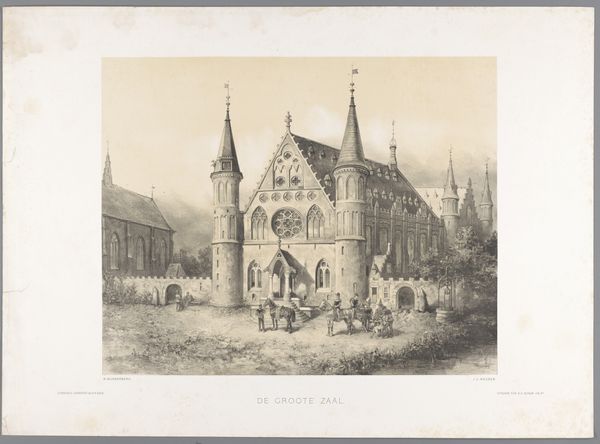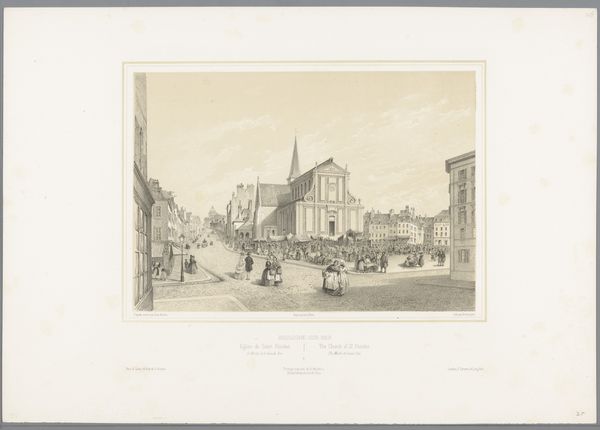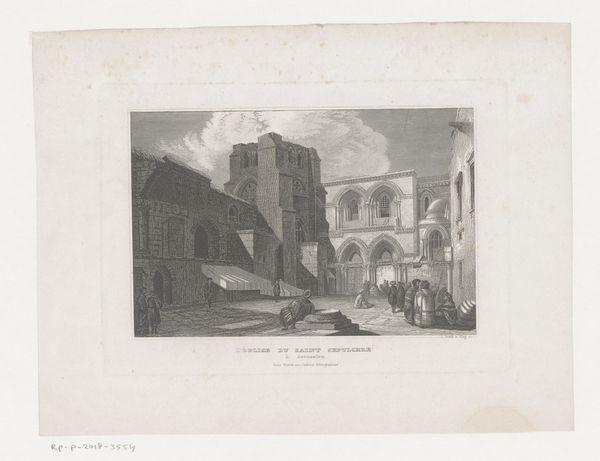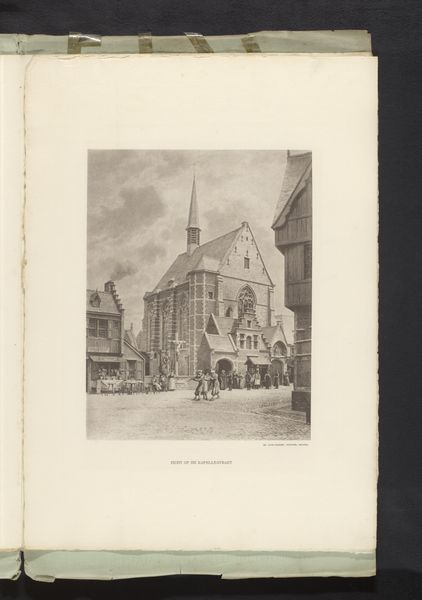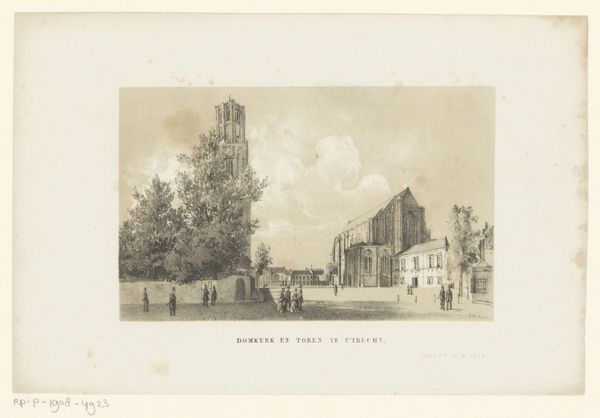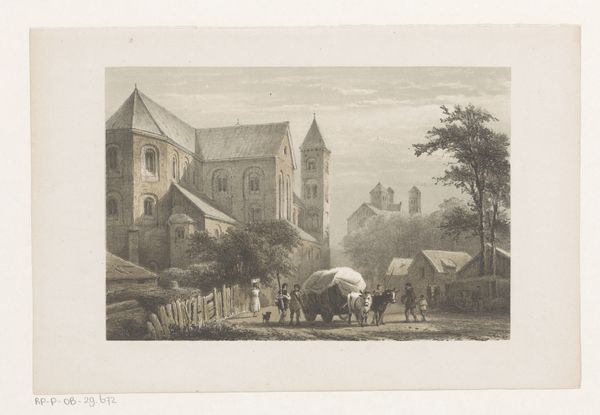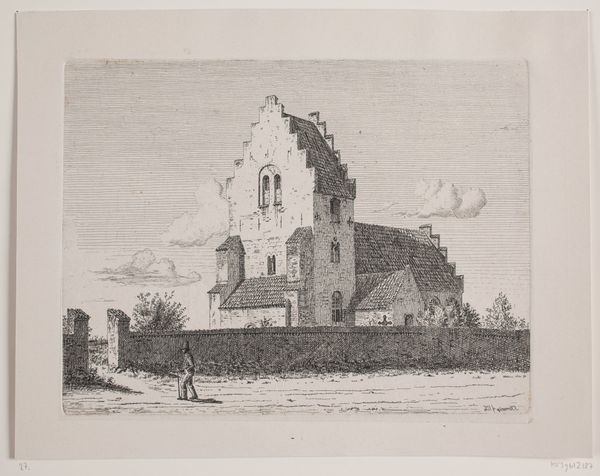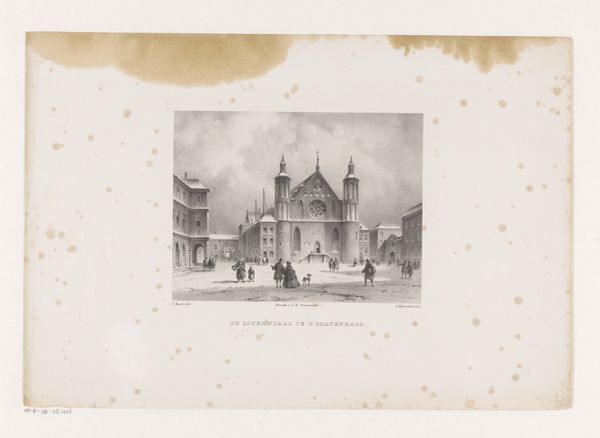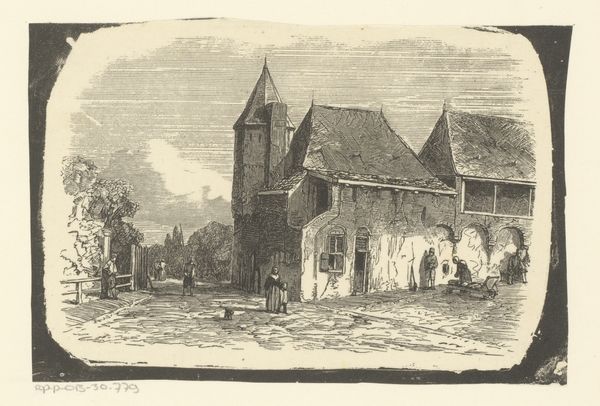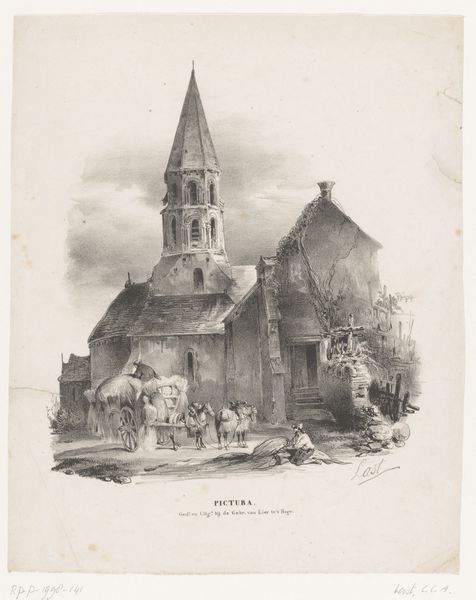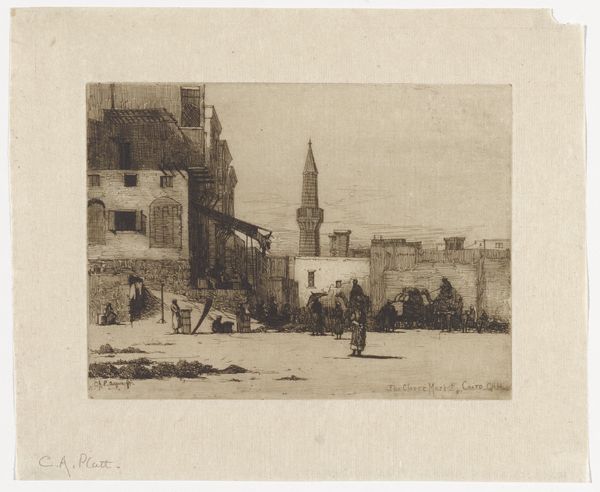
Gemeenschap verlaat de Oude Kerk aan de Keizerstraat in Scheveningen 1850 - 1863
0:00
0:00
drawing, print, engraving
#
drawing
# print
#
pencil sketch
#
landscape
#
charcoal drawing
#
cityscape
#
engraving
#
realism
Dimensions: height 195 mm, width 230 mm
Copyright: Rijks Museum: Open Domain
Editor: This is "Gemeenschap verlaat de Oude Kerk aan de Keizerstraat in Scheveningen," created between 1850 and 1863 by Carel Christiaan Antony Last, using engraving techniques. It's quite detailed, almost photographic in its realism. The texture achieved through the engraving gives a certain depth to the building. What elements of this print particularly stand out to you? Curator: The manipulation of light and shadow, achieved through varied line weights and densities, commands attention. Consider how the facade of the church is rendered: darker, more intensely etched lines define the structure's form, while lighter, more delicate marks suggest the soft glow of the sky. Note also how the receding perspective is reinforced not merely through spatial recession but through a meticulous graduation of tonal values. Editor: That makes sense. The gradations are subtle but create an immersive effect. Is there significance in the architectural depiction itself? Curator: Indeed. Observe the stark geometric forms of the church against the more organic rendering of the figures. The contrast emphasizes the solidity and permanence of the institution juxtaposed against the ephemeral nature of human life. Moreover, examine the way the figures are arranged – the repetition of forms, the groupings and pairings – it hints at a social structure. What principles or philosophy do you see governing this structural choice? Editor: I hadn't considered the arrangement of the people as structural! Perhaps to subtly echo the ordered, hierarchical nature of the church itself? Curator: Precisely. And consider, too, the textural interplay between the rough stone of the building and the smoother garments of the figures, again emphasizing a dialogue between permanence and transience, between the built environment and the individuals who inhabit it. Editor: It's amazing how much can be gleaned from just analyzing the composition and technique. Thanks for showing me that. Curator: The artwork's internal relationships are more revealing than external context sometimes. Studying how the artwork manipulates fundamental visual elements deepens understanding, don't you think?
Comments
No comments
Be the first to comment and join the conversation on the ultimate creative platform.


